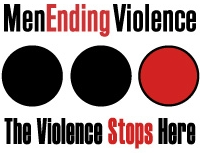Violence Sells?
Time to Say ‘Enough’ to Twisted Advertisers
by Joanna Chiu
Before anyone had even heard of the show Jersey Shore, MTV leaked out a clip of Snooki (Nicole Polizzi) getting punched in a face by a man in a bar, and the clip went viral, prompting articles like “The Countdown to Snooki Getting Punched in the Face Is On!” (trigger warning for link).
The author of that article for Barstool Sports wrote:
“But as much as I enjoyed the first episode it was all overshadowed by the upcoming scenes when Snooki gets coldcocked in the face by a dude. I literally have to take sleep medicine now before I go to bed now just so I can relax and not think about how excited I am for it. Because I’m telling you right now this is destined to go down as one of the greatest moments in the history of television.”
MTV waited until the last minute to announce that it wouldn’t air the footage, and denied having leaked the clip, despite having included part of the clip in the trailer for the show.
That is just one of thousands of disturbing examples of violence against women being used for decades to promote everything from men’s suits to high fashion to vegetarianism (You can thank PETA for that one).
This ad is from the 1950s. Not much progress in depictions
of women in advertising has happened since then.
This 2007 ad for Dolce & Gabbana, which became known as simply “the gang rape ad,” depicts a man pinning down a woman while other men look on.
This isn’t just a case of “sex sells.” These tactics are continuing to go on and on because advertisers, organizations like PETA and entertainment companies believe that images of violence against women can sell products and influence behaviors.
But millions of media consumers can’t all be sadistic women-haters, right? The average person in North America sees 3000 advertisements per day. I’d much rather believe that many people just don’t take the time to critically evaluate advertisements, or to use tools like online petitions to pressure advertisers and media companies to make improvements.
But unfortunately, unless more people stand up to twisted advertising tactics, images of violence against women will continue to proliferate.
Being critical of the media doesn’t mean that you have to live in a cave the rest of your life. If you enjoy “guilty pleasure” TV, for instance, there’s nothing wrong with watching it. The goal is to transform the way you engage with media so that it has less power to influence you—including your self-esteem for example.
One out of every four college-aged women has an eating disorder, and three minutes spent looking at a fashion magazine caused 70% of women to feel depressed, guilty, and shameful (Source).
Poor self-esteem and body image can lead people to feel depressed, fall short of their potential or tolerate abusive relationships, according to Psychology Today. And when there are thousands of toxic messages in media and advertising that can threaten your sense of self-worth every single day, developing media literacy can actually help you feel happier and be more successful.
It was clear to Adios Barbie co-editors Sharon Haywood, Pia Guerrero and Ophira Edut that promoting media awareness would be a cornerstone in
their efforts to promote healthy body image. In addition to providing media commentary on their website and book, Body Outlaws, Adios Barbie editors lead media literacy workshops on topics including body image, race and representation, and violence in the media.
“When we started Adios Barbie in 1998, the general public didn’t even know what the term ‘body image’ meant. Our intent was to inspire critical thinking around the negative impact media representation has on healthy identity and body image,” says Pia Guerrero.
Men suffer from violent and hypersexualized content in media as well, Guerrero argues:
“While the media drills into us the constant message that the role of women is to be submissive to men and be passive sexual objects to be physically admired or consumed, it also sends the message that men are inherently violent, inconsiderate and tough. This representation of both genders has become ‘normal’ in our culture and as a result is left unquestioned or accepted.”
And if that doesn’t sound bad enough, Adios Barbie points out that ads featuring women of colour can reinforce both gender and racial stereotypes, such as this ad for Tiger Beer, which ran in the U.K:
Luckily, Adios Barbie is part of a great variety of innovative efforts to educate the public to be more media aware, including the award-winning film and lecture series by Jean Kilbourne, Killing Us Softly: Advertising’s Image of Women.
So there is hope! Once more people become media aware, the 3000 advertisements and other forms of media we see every day will have less power to perpetuate things like violence, sexism, racism and body anxiety in our society. Here are some simple steps you can take to take back the power from advertisers today:
Watch This:
Get Media Aware:
http://www.media-awareness.ca/english/index.cfm
http://www.adiosbarbie.com/category/media/
http://www.realitybitesbackbook.com/
Saw Something Horrid? Start a Petition Quick and Easy Here:
Banish Sexists Ads Here:
http://msmagazine.com/blog/blog/tag/sexist-advertising/
Or Blog About It!
http://www.gender-focus.com/ (Gender Focus is one of the best Canadian feminist blogs in my opinion)
http://community.feministing.com/about/
Day Two
Prevention of Violence Against Women Week April 15 – 21, 2012
Battered Women’s Support Services presents:
How Does She Resist? Resisting Media Representations to End Violence Against Girls and Women
Day One
How Media Literacy Can Help End Violence Against Women by Joanna Chiu









Joanna,
Thank you for the recontamination to watch Killing Us Softly 3 Advertising’s Image of Women by Jean Kilbourne. I just did. It is not new but the ideas are relevant as and even more then ever. Hilla
Hi Hilla! I agree!